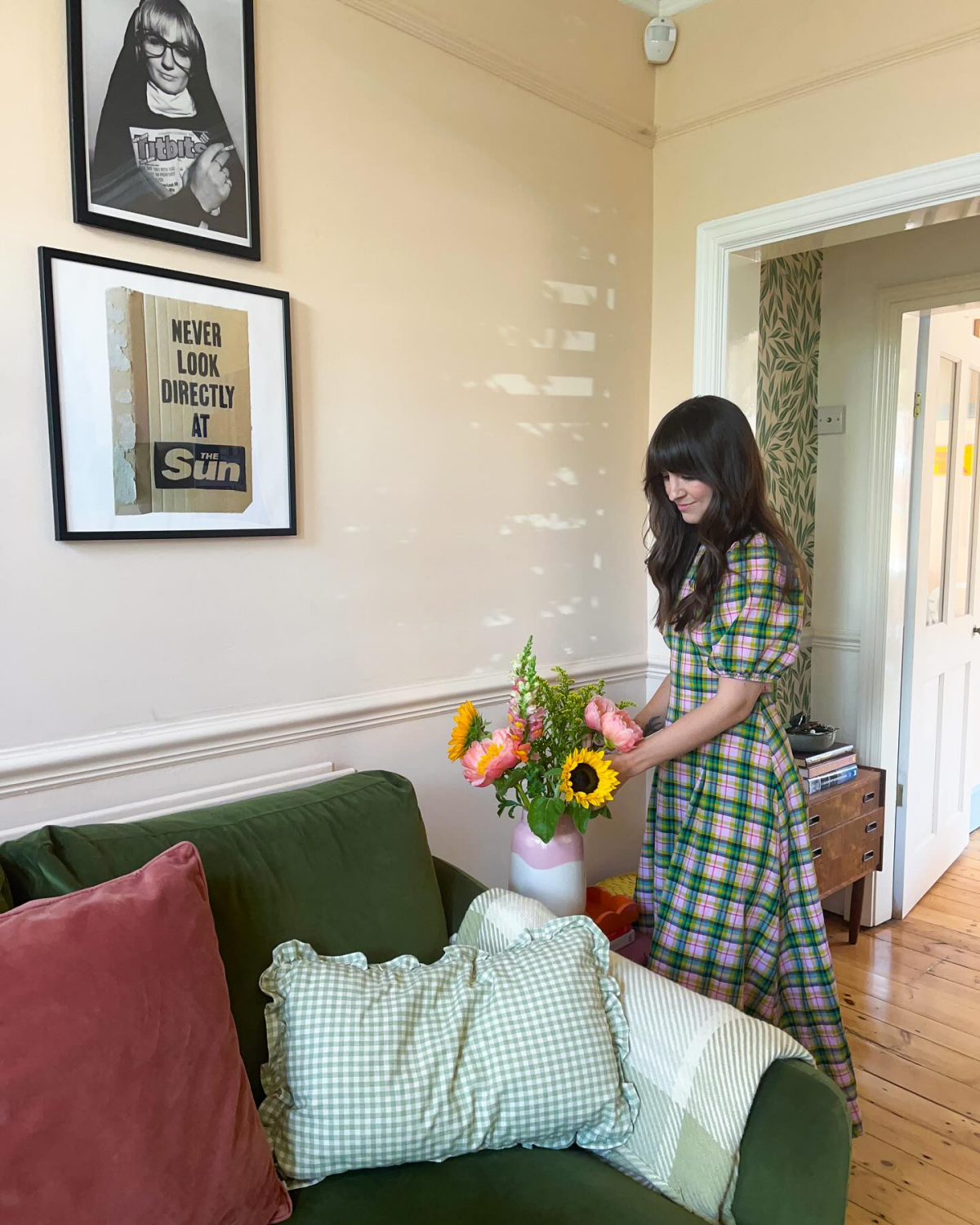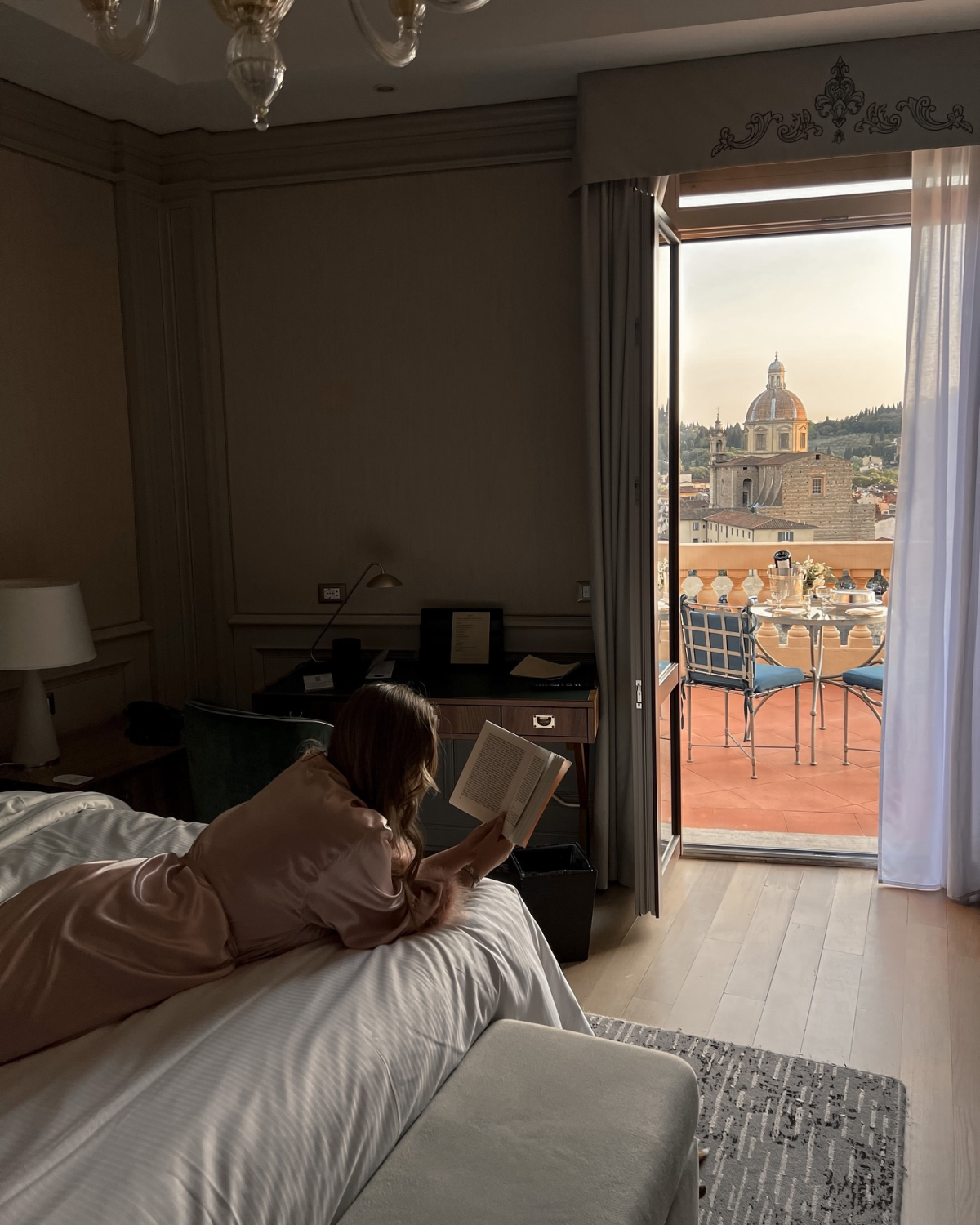Feeling Like a Ghost in Your Own Life? Here’s How to Start Inhabiting It.
Over the years, I’ve talked with so many people who feel like they’re just running through a checklist every single day. Wake up, commute, work, chores, sleep, repeat. It’s this weird, nagging sense of being disconnected, like you’re watching your own life from the outside looking in. I once had a client, a very successful designer, who said something that really stuck with me: “I create these amazing, vibrant spaces for other people to live in, but I feel like a ghost in my own home.” He was building a life, but he’d completely forgotten how to inhabit it.
In this article
Sound familiar? It’s an incredibly common feeling. Our world is obsessed with productivity and efficiency, and frankly, that often comes at the expense of actually being present.
You might see trends telling you to “romanticize your life,” and while the heart is in the right place, that phrase can be a little misleading. It kind of suggests you need to create a fantasy, like you’re performing for an invisible audience. The work I focus on is different. It’s not about pretending; it’s about inhabiting. It’s the very real practice of cultivating presence, a skill that’s actually grounded in how our brains work. This isn’t about faking a perfect life for the ‘gram. It’s about learning to pay attention to the life you actually have, and in doing so, finding richness and meaning in the small moments you’ve been trained to ignore.

And the best part? It’s a learnable skill. Anyone can do it.
Why This Isn’t Just ‘Woo-Woo’—It’s Brain Science
To get why this works, we need a quick peek under the hood at how your brain operates. Deep in your brainstem, there’s a little filtering mechanism often called the Reticular Activating System (RAS). Think of it as your brain’s bouncer—it decides what sensory information gets past the velvet rope and into your conscious attention. Have you ever decided you want a specific type of car and then suddenly you see it everywhere? That’s your RAS in action. You’ve basically told your brain, “Hey, this is important to me now,” so it starts highlighting it for you. The exact same thing happens with our daily experience. When you consciously decide to look for small moments of peace or beauty, you’re training that bouncer to let more of that stuff in. You’re not creating magic; you’re just directing your own focus.

This is backed up by a cool concept called neuroplasticity. For a long time, the experts thought the adult brain was pretty much fixed. Well, we now know that’s totally wrong. Your brain can and does reorganize itself by forming new neural connections based on your experiences. So, every time you deliberately pull your focus from worrying about a meeting tomorrow to the actual feeling of warm water on your hands while washing dishes, you’re strengthening the neural pathways for presence. It’s like doing a bicep curl for your attention muscle. Over time, it gets easier and more automatic to notice the good stuff.
Oh yeah, and this practice is also a direct antidote to something called the “hedonic treadmill.” This is the all-too-human tendency to get used to things. You get that big promotion, and you’re on cloud nine for a few weeks, but soon enough, it just becomes… normal. Your baseline happiness level resets. By learning to savor small, everyday good things—the incredible taste of your first sip of coffee, the sound of rain on the roof—you continuously generate fresh little hits of well-being. You learn to get joy from the fabric of your life, not just the big, flashy events.

Practical, Real-World Techniques to Build Presence
Okay, enough theory. I don’t just tell people to “be more mindful.” That’s way too vague. Instead, I give them structured, repeatable exercises that actually work. They’re simple, require zero special equipment, and honestly, they’re free. All they cost is a few minutes of your time.
Technique 1: The Five-Minute Sensory Audit
This is usually the first exercise I teach because it’s so effective at pulling you out of the noisy chaos of your thoughts and into your physical body. Find a relatively quiet spot where you can sit for just five minutes.
1. Settle In: Close your eyes. Take one deep, slow breath in… and let it all the way out.
2. Listen: Now, focus on your hearing. Try to identify five separate sounds without judging them. Don’t label them “annoying car alarm” or “nice bird song.” Just notice. The hum of your computer. A distant dog bark. Your own breathing. The goal here is just neutral observation.
3. Feel: Bring your attention to four things you can feel. The texture of your jeans against your skin. The solidness of the chair holding you up. The temperature of the air on your cheeks. The weight of your feet on the floor.
4. See: Gently open your eyes. Notice three things you can see, especially things you normally overlook. A scuff on the baseboard. The way the light reflects off a picture frame. A tiny spiderweb in the corner.
5. Smell: What are two things you can smell right now? Maybe the faint scent of your soap or the dusty smell of a book.
6. Taste: Finally, notice one thing you can taste. It might just be the neutral taste of your own mouth, or the lingering hint of mint from your toothpaste.

Heads up! Your brain will try to pull you back into thought-land. That’s its job! When it happens, don’t get frustrated. Just gently acknowledge it by saying “thinking” to yourself, and then guide your focus back to a sound or a feeling. Think of it as a rep at the gym, not a test you can fail.
Quick Win: The 30-Second Reset
By the way, you don’t always need five minutes. If you’re feeling stressed in a meeting or overwhelmed in the grocery store line, try this super-quick version. Just pause and consciously notice: one thing you see, one thing you hear, and one thing you feel. That’s it. It’s a powerful little pattern-interrupt for your stress response.
Technique 2: Habit Stacking for Mindful Moments
The number one reason new habits fail? We forget to do them. That’s why habit stacking is so brilliant. The idea is to piggyback your new mindfulness practice onto a habit you already do without thinking. You’re just adding one little thing to an existing routine.

Instead of trying to find a new time in your day, just link it. For example:
- While your coffee is brewing… take three slow, conscious breaths. Feel your lungs expand and contract.
- Every time you wash your hands… for those 20 seconds, focus only on the feeling of the warm water and the scent of the soap.
- When you first sit down at your desk… before opening your laptop, take 10 seconds to just notice the feeling of the chair supporting you.
- Right after you put your car in park… sit for one moment and listen. Just listen, without moving to grab your things.
See how that works? You’re not reinventing your day; you’re just inserting tiny moments of awareness into the day you already have.
Some Real Talk: What to Do When It Feels Hard
Look, this isn’t going to magically make you feel “zen” overnight. At first, it might even feel a little silly or difficult. That’s completely normal. I worked with another client who was struggling with a really stressful commute. The first week she tried the sensory audit on the train, she said she just felt more aware of how loud and crowded it was. But she stuck with it. Eventually, instead of getting lost in anxious thoughts about work, she started noticing things—the interesting patterns on the floor, the rhythm of the train on the tracks. It didn’t make the commute a spa day, but it stopped it from draining her before her workday even began. It took her about two or three weeks to feel that shift.

So, give yourself some grace. The goal isn’t to empty your mind. The goal is simply to notice where your mind is, and gently bring it back. Some days will be easier than others.
Good to know: While these techniques are powerful tools for general well-being, they are not a substitute for professional mental health care. If you’re dealing with significant anxiety, depression, or trauma, please consider reaching out to a therapist. Think of these exercises as excellent mental hygiene, like brushing your teeth, but sometimes you still need to see a dentist. A quick search for a local therapist or using an online directory is a great first step if you feel you need more support.
Your Challenge for This Week
Ready to try? Here’s your challenge, should you choose to accept it: Try the Five-Minute Sensory Audit just once a day for the next seven days. That’s it. You don’t have to do it perfectly, and you don’t have to feel enlightened. Just notice. See what happens when you intentionally pay attention to your life, even for just five minutes. You might be surprised by what’s been there all along.










